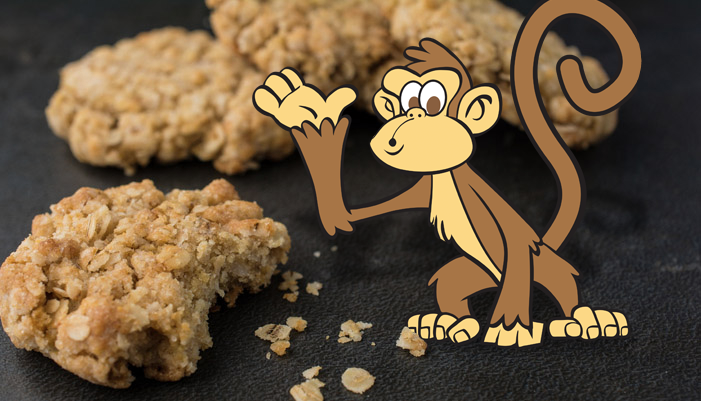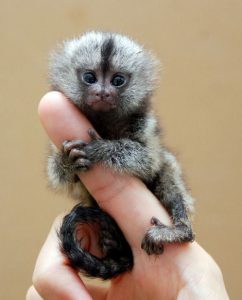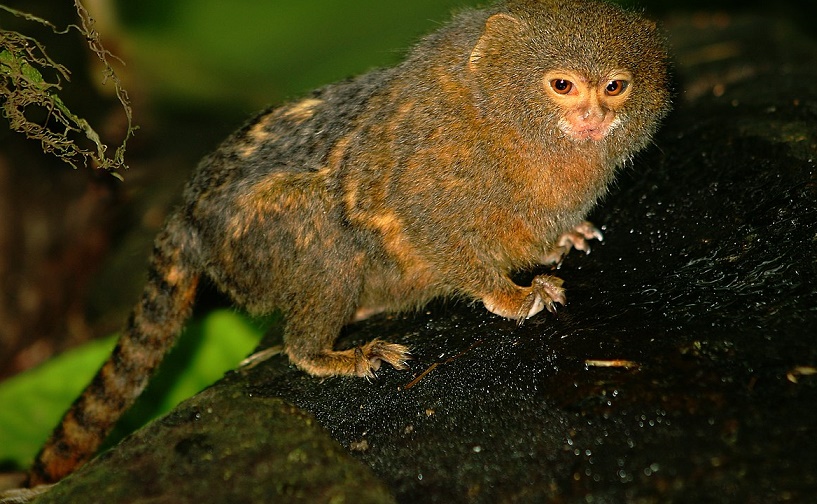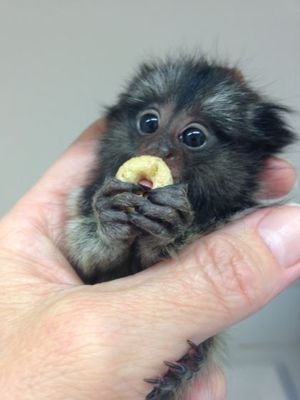Taking care of the nutritional needs of your Finger Monkey, or Pigmy Marmoset is a significant responsibility. First of all, you have to know what the species lies. In general, a full grown Finger Monkey enjoys a varied diet of fresh and organic foods. As is the case with human infants, baby Finger Monkeys begin eating by moving from liquids to solids as their bodies mature. So, when you go out grocery shopping for your little friend, be sure to pick up some or all of the following foods so you can offer it a well-balanced diet.
What does a finger monkey eat:
• Fresh leaves
• Small or chopped fresh fruits
• Tropical flower nectars
• Insects and beetles
• Miniature lizards
• Spiders and flies
• Tiny reptiles
• Tree gum and sap
• “Monkey Biscuits”
• Baby formula
• Rice cereal
• Oatmeal
After all that eating, your Pygmy Marmoset will probably be thirsty. Keeping your Finger Monkey hydrated is crucial. Without enough to drink, your little friend could begin to suffer from preventable ailments. On the same token, you don’t want to offer the animal an unhealthy or potentially harmful drink. So, while you’re making your grocery list make sure to choose from one of these Finger Monkey favorites:
• Sap from tropical trees
• Fresh, clean drinking water (avoid water that has been fortified with fluoride)
• Almond or goat’s milk (some studies show that soy products can result in aggression in adults)
• Diluted, organic fruit juice (avoid fruit juice concentrate)
When offering your Finger Monkey food, try to keep in mind that maintaining proper nutrition is essential to raising a happy and healthy primate. The sooner you get the animal into a well-balanced routine, the better your chances of enjoying their company for years to come. Also, remember that feeding a baby Finger Monkey takes some skill. You should not ever feed your baby Finger Monkey while it is laying on its back, but instead, be sure to place it on its stomach with its head tilted slightly upwards to prevent choking and death.











